Did you know that over 60% of indoor gardeners start with terrariums due to their low maintenance? You can create your own mini ecosystem with ease using closed terrarium designs. Let’s explore 10 beginner-friendly ideas, from mossy havens to tiny jungles, with step-by-step layering tips. Stick around to uncover precise setups that fit your space and style.
Contents
Simple Mossy Haven
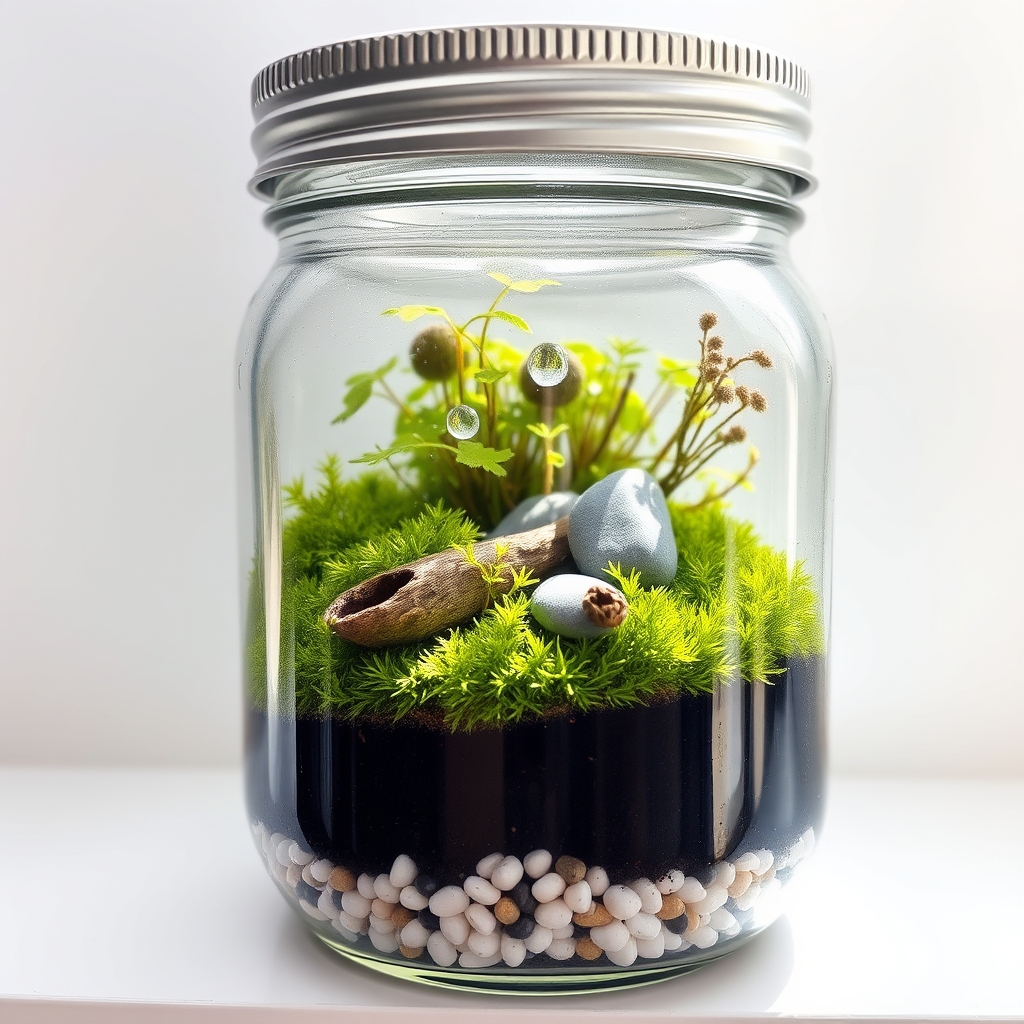
Creating a Simple Mossy Haven is an ideal starting point for beginners looking to build a closed terrarium. This design focuses on using moss as the primary plant, which thrives in the humid, low-maintenance environment of a sealed glass container. Moss is incredibly resilient and requires minimal care, making it perfect for those new to terrarium gardening. To begin, select a clear glass jar or container with a lid, and gather materials like small pebbles, activated charcoal, potting soil, and a variety of moss types, which can often be found in local forests or purchased from a nursery.
Start by layering the bottom of the container with pebbles for drainage, followed by a thin layer of activated charcoal to prevent mold and odors. Add a layer of moist potting soil, then carefully place the moss on top, pressing it gently into the soil to secure it. You can enhance the visual appeal by adding small decorative elements like tiny rocks, driftwood, or miniature figurines to create a whimsical forest scene. Seal the container and place it in indirect sunlight, as direct sun can overheat the terrarium and harm the moss.
This Simple Mossy Haven requires little upkeep—just monitor the moisture levels to make sure the environment stays humid but not overly wet. If condensation builds up excessively on the glass, briefly open the lid to allow some air circulation. With this easy design, beginners can enjoy a lush, green miniature ecosystem that brings a touch of nature indoors with minimal effort.
Tiny Fern Forest
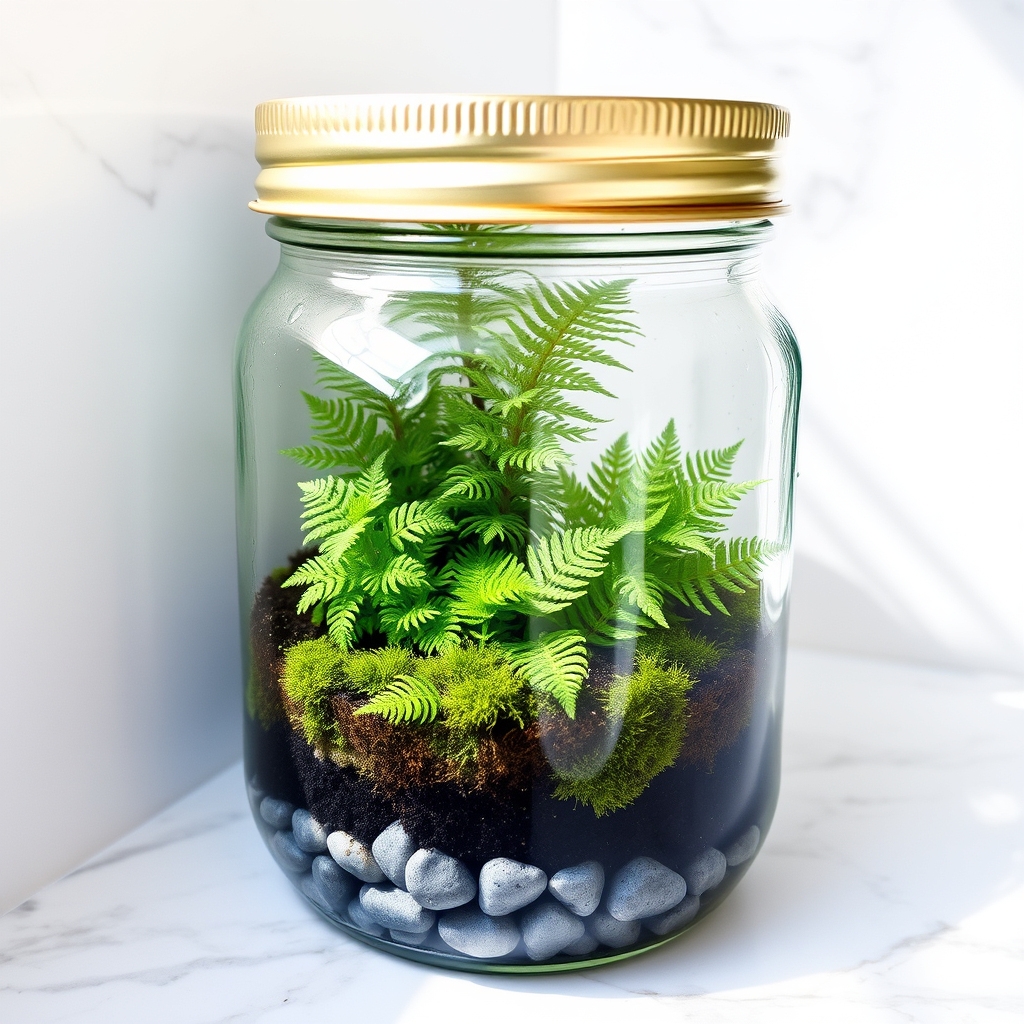
A Tiny Fern Forest is a perfect closed terrarium design for beginners due to its simplicity and low maintenance needs. This design focuses on creating a miniature woodland scene using small ferns, which thrive in the humid, enclosed environment of a terrarium. Ferns like the button fern or maidenhair fern are ideal choices as they are compact, hardy, and love the consistent moisture that a closed terrarium provides.
To create a Tiny Fern Forest, start with a small glass container with a lid, such as a mason jar or a glass dome. Layer the bottom with pebbles for drainage, followed by a thin layer of activated charcoal to prevent mold, and then add a substrate of potting mix suitable for ferns. Plant a few small ferns, making sure they have enough space to grow, and add tiny decorative elements like moss, small rocks, or miniature figurines to enhance the forest-like aesthetic. Mist the inside lightly before sealing the lid to maintain humidity.
This design not only looks enchanting but also requires minimal care once established. Place the terrarium in indirect light, as direct sunlight can overheat the enclosed space, and check occasionally to make sure the soil remains moist but not waterlogged. A Tiny Fern Forest brings a touch of lush greenery to any space, making it an ideal project for those new to terrarium building.
Pebble and Plant Mix
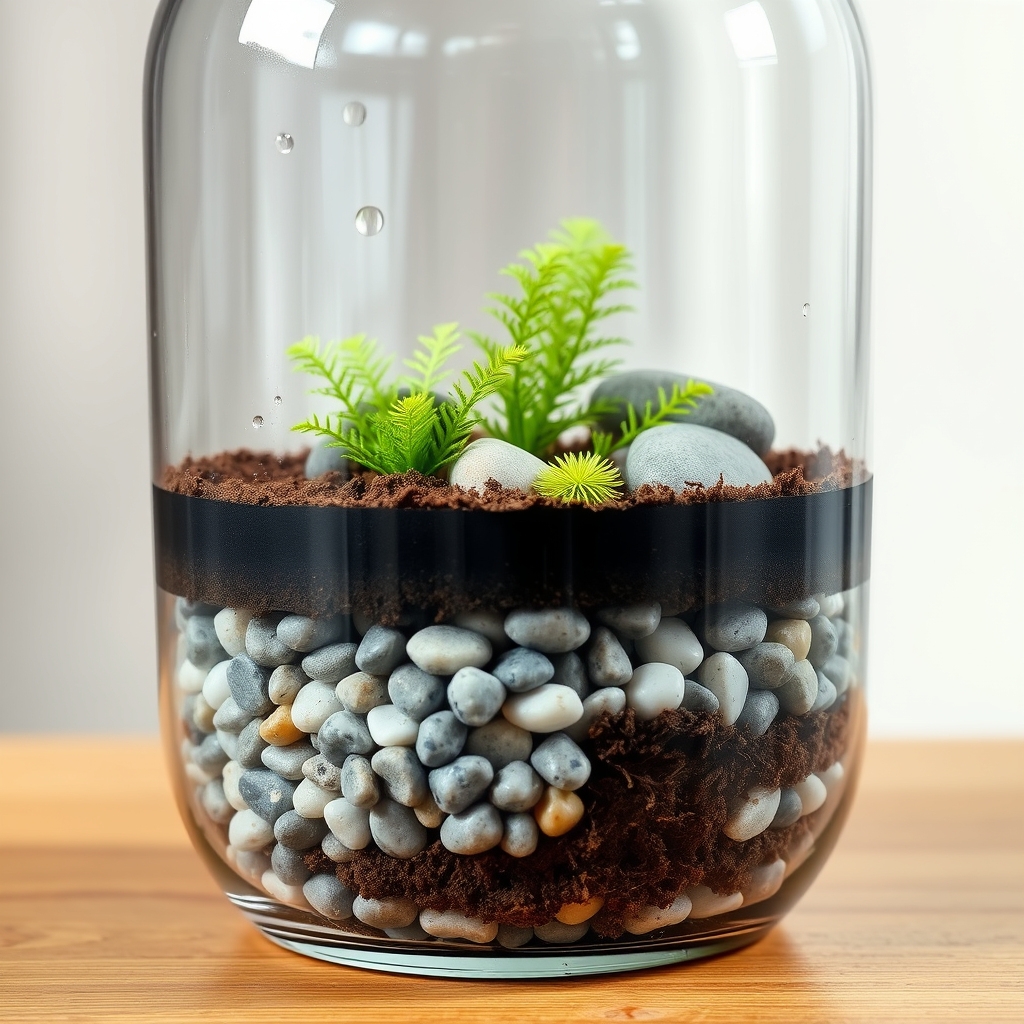
The Pebble and Plant Mix is a simple yet visually appealing design for beginners creating a closed terrarium. This design focuses on combining small pebbles or gravel with low-maintenance plants to create a balanced and natural-looking miniature ecosystem. The pebbles serve as a drainage layer at the bottom of the terrarium, preventing root rot by keeping excess water away from the plant roots, while also adding a decorative element to the overall aesthetic.
To create this design, start by layering the bottom of your glass container with 1-2 inches of pebbles or gravel. On top of this, add a thin layer of activated charcoal to help with filtration and odor control, followed by a layer of potting mix suitable for your chosen plants. Select small, humidity-loving plants like mosses, ferns, or air plants, and arrange them thoughtfully among the pebbles, leaving some of the stones visible for contrast. This mix not only looks charming but is also easy to maintain, as the pebbles help regulate moisture levels in the closed environment.
This design is ideal for beginners because it requires minimal upkeep and allows for creativity in arranging the elements. You can experiment with different colors and sizes of pebbles to enhance the visual appeal, and the hardy nature of the recommended plants guarantees they thrive in the humid, enclosed space of a terrarium. With just a little attention to watering and light, the Pebble and Plant Mix can flourish for months, offering a delightful green display in your home.
Miniature Jungle Scene
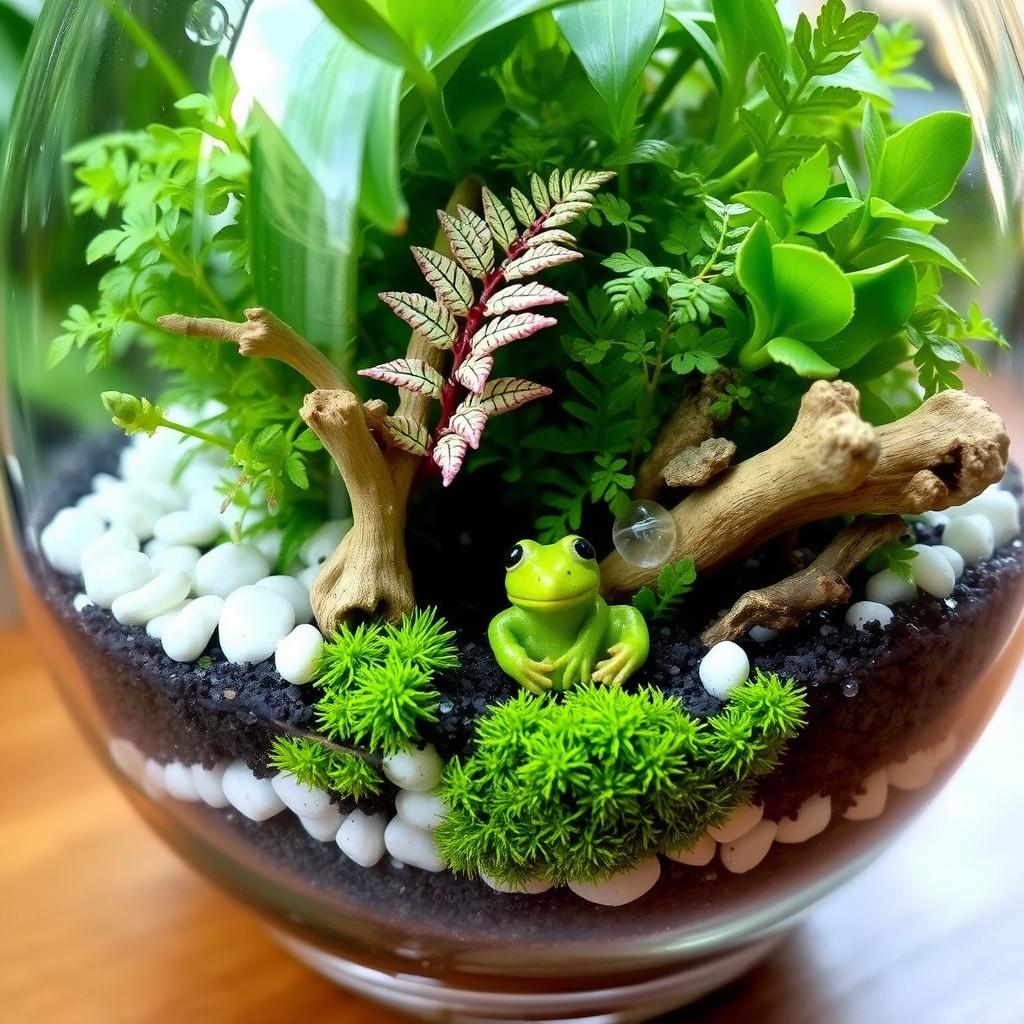
Creating a miniature jungle scene in a closed terrarium is a fantastic way for beginners to bring a lush, tropical vibe into a small space. This design mimics the dense, vibrant environment of a jungle by incorporating a variety of small plants, moss, and natural elements. Choose a glass container with a lid to maintain the high humidity levels that jungle plants thrive in, and start with a base layer of pebbles or gravel for drainage, followed by a thin layer of activated charcoal to keep the environment fresh.
Select small, humidity-loving plants like ferns, fittonia (nerve plants), and miniature orchids to form the backbone of your jungle scene. Add patches of moss to mimic the forest floor and enhance the lush, green aesthetic. For added depth, incorporate tiny figurines of animals, such as frogs or lizards, or small pieces of driftwood and rocks to create a natural, wild look. Mist the terrarium lightly during setup to establish humidity, and place it in indirect sunlight to avoid overheating.
Maintenance of a miniature jungle terrarium is simple for beginners. Monitor the moisture levels to make sure the environment stays humid but not overly wet, and trim any overgrown plants to maintain the scale of your tiny jungle. With minimal care, this design will flourish, offering a fascinating glimpse of a tropical ecosystem right on your tabletop.
Succulent Small World

Succulent Small World is a delightful and low-maintenance closed terrarium design perfect for beginners. This concept focuses on creating a miniature desert-like environment within a glass container using small succulents and cacti. These plants thrive in arid conditions, making them ideal for a closed terrarium where moisture is retained, as they require minimal watering and can adapt to the humid microclimate with proper care.
To build a Succulent Small World, start with a layer of pebbles or gravel at the bottom of the container for drainage, followed by a thin layer of activated charcoal to prevent mold and odors. Add a substrate suitable for succulents, such as a mix of potting soil and sand, and then arrange small succulents or cacti in a visually appealing layout. Enhance the desert theme by incorporating tiny rocks, driftwood, or miniature figurines to create a whimsical, small-scale world.
This design not only adds a touch of greenery to your space but also serves as an engaging project that requires little upkeep. Place the terrarium in a spot with bright, indirect light, and avoid overwatering to prevent root rot. With minimal effort, your Succulent Small World will flourish, offering a charming glimpse into a tiny desert ecosystem.
Air Plant Oasis
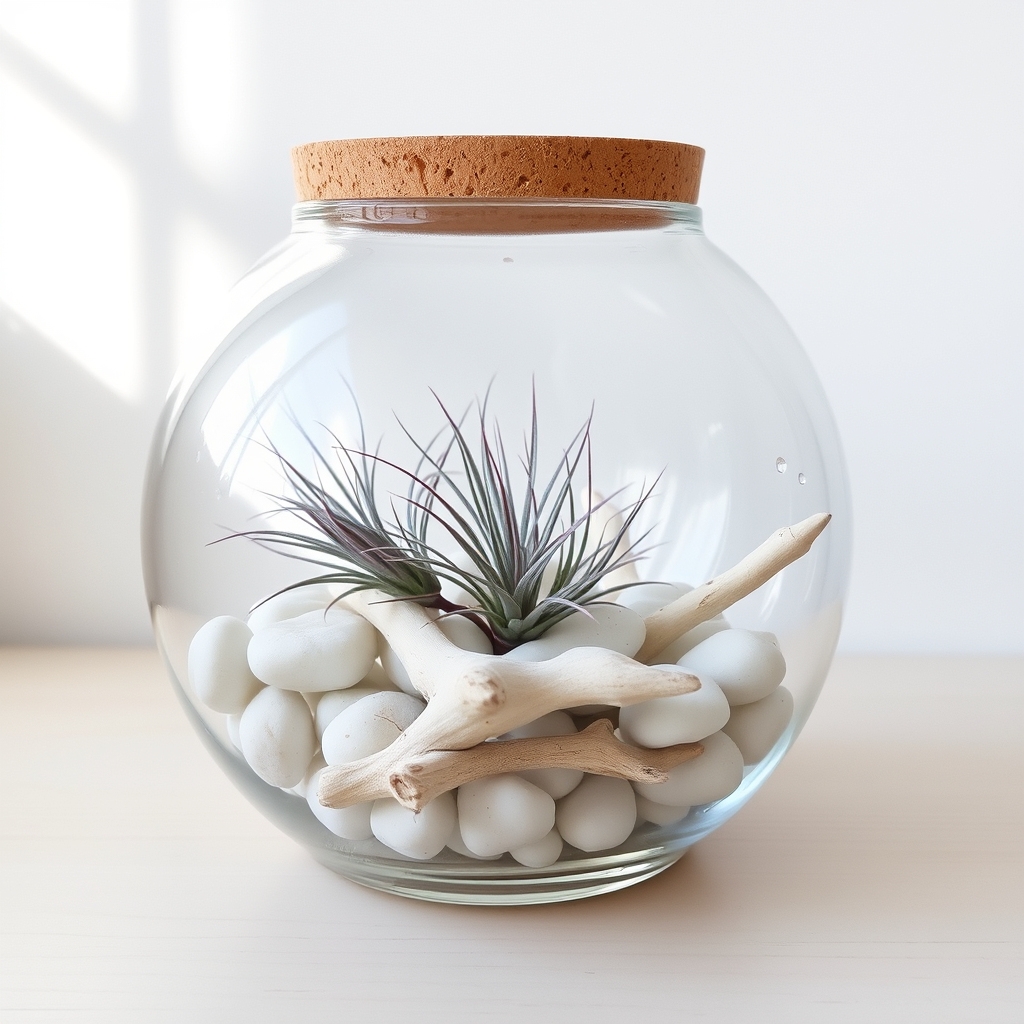
Creating an Air Plant Oasis in a closed terrarium is a fantastic option for beginners due to the low-maintenance nature of air plants (Tillandsia). These unique plants don’t require soil to grow, as they absorb moisture and nutrients through their leaves from the air. This makes them perfect for a sealed environment where humidity is naturally higher, mimicking their native tropical habitats.
To design an Air Plant Oasis, start with a clear glass container with a lid to maintain humidity. Place a layer of decorative pebbles or sand at the bottom for aesthetics, as air plants don’t need a substrate for rooting. Position the air plants on top of the pebbles or attach them to small pieces of driftwood or rocks using non-toxic glue or wire for a natural look. Since air plants thrive on air circulation, make sure they aren’t overcrowded, even in a closed terrarium.
While closed terrariums retain moisture well, air plants still need occasional care. Every one to two weeks, open the terrarium and mist the plants lightly with water, or soak them for 20-30 minutes before returning them to the container. Place the terrarium in bright, indirect light to keep the air plants healthy and vibrant, creating a stunning, low-effort display.
Green Layered Look
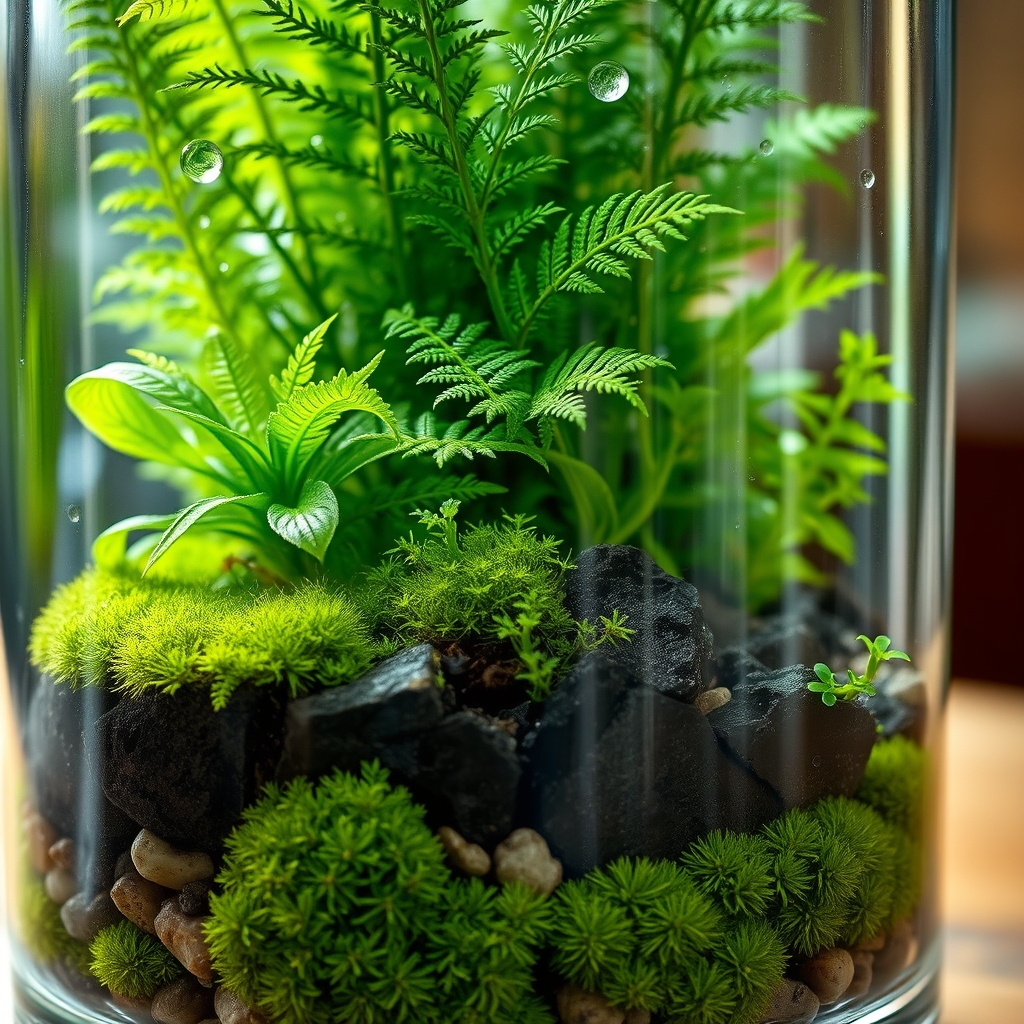
The Green Layered Look is a popular and visually appealing design for closed terrariums, perfect for beginners due to its simplicity and striking aesthetic. This design focuses on creating distinct layers of greenery using different types of moss, small ferns, or air plants, arranged to mimic a miniature forest floor. By varying the heights and textures of the plants, you can achieve a lush, multi-dimensional effect that draws the eye and adds depth to your terrarium.
To create this look, start with a base layer of pebbles or gravel for drainage, followed by a thin layer of activated charcoal to keep the environment fresh. Add a substrate layer of potting mix, then begin placing your plants, starting with the tallest at the back and layering shorter plants or moss in the foreground. This tiered arrangement not only enhances the visual appeal but also guarantees that each plant gets adequate light and space to thrive within the enclosed ecosystem.
Experiment with different shades of green and textures to make the layers stand out, such as combining vibrant moss with delicate ferns or adding small-leafed creeping plants. This design is low-maintenance, as the closed terrarium retains moisture, requiring only occasional watering and indirect sunlight to maintain its vibrant, layered beauty.
Woodland Wonder Jar
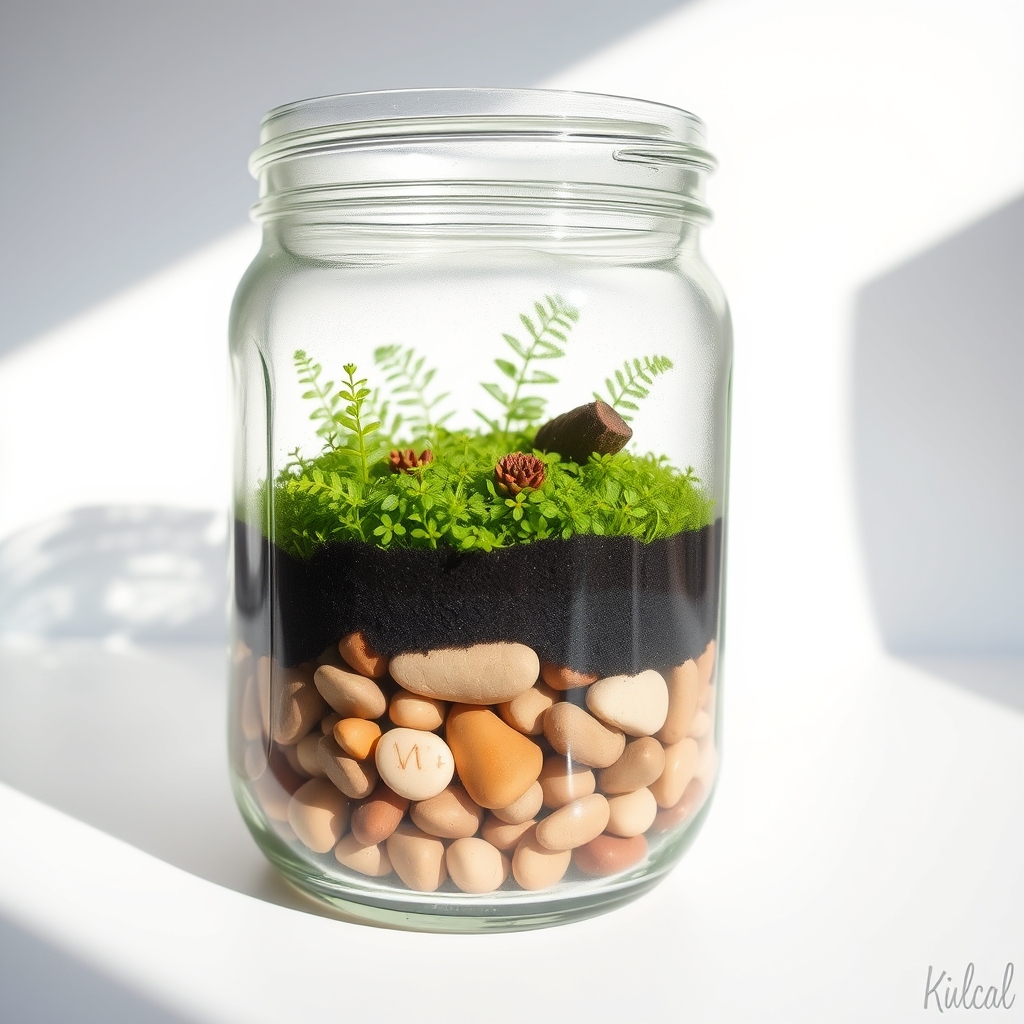
The Woodland Wonder Jar is a charming and beginner-friendly closed terrarium design that mimics the serene beauty of a forest floor. This design typically uses a simple glass jar with a lid to create a self-sustaining ecosystem. It incorporates small plants like mosses, ferns, and miniature orchids, which thrive in the humid, enclosed environment, evoking the lush, green essence of a woodland setting.
To create a Woodland Wonder Jar, start with a layer of pebbles or gravel at the bottom for drainage, followed by a thin layer of activated charcoal to keep the environment fresh. Add a substrate of potting soil mixed with sphagnum moss to retain moisture, then carefully plant your chosen flora. Decorative elements like small twigs, rocks, or tiny figurines of forest creatures can enhance the woodland theme, making your terrarium a miniature natural wonder.
This design is ideal for beginners because it requires minimal maintenance once established. The closed jar retains moisture, reducing the need for frequent watering, and the small scale allows for easy experimentation with plant arrangements. Place your Woodland Wonder Jar in indirect sunlight to avoid overheating, and enjoy a little piece of the forest right on your desk or shelf.
Tropical Glass Garden
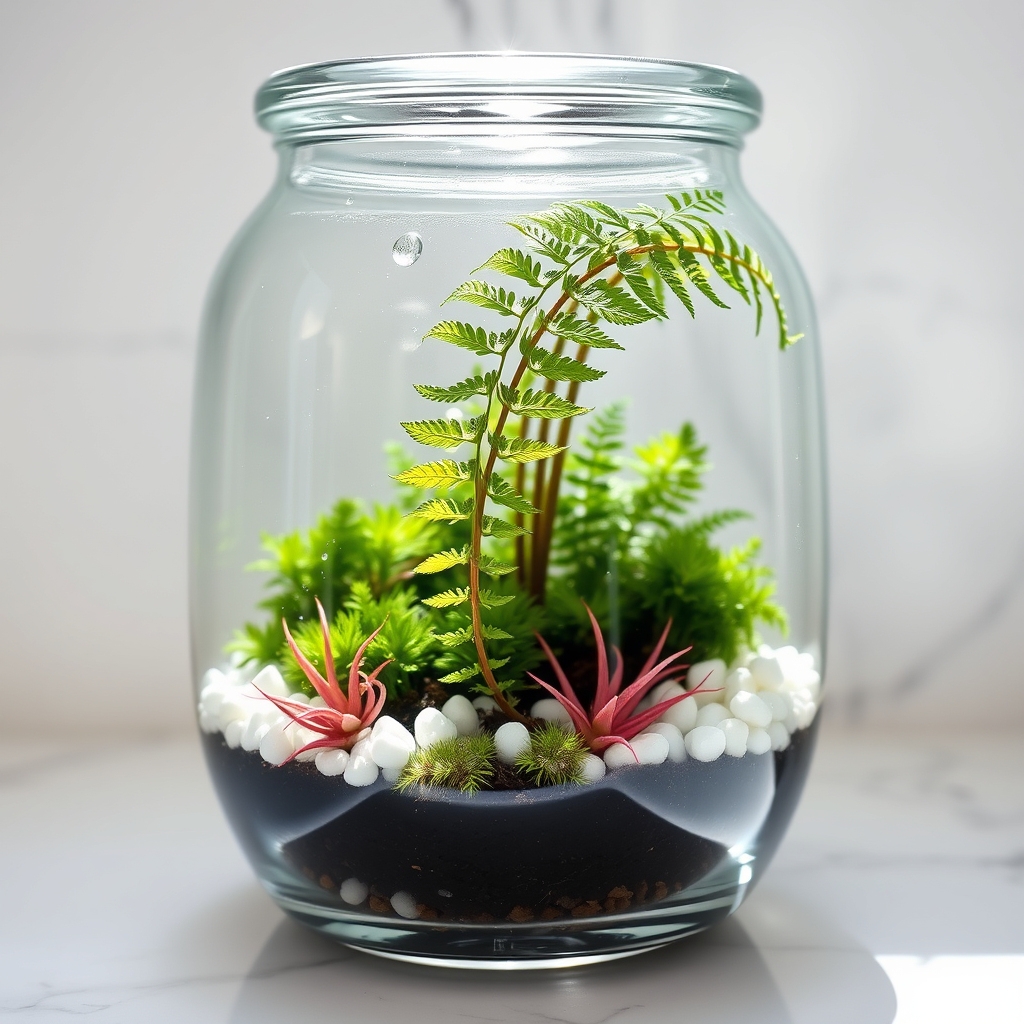
A Tropical Glass Garden is an enchanting closed terrarium design that mimics the lush, humid environment of a tropical rainforest. This type of terrarium is perfect for beginners who want to create a vibrant, low-maintenance miniature ecosystem. By using a sealed glass container, the Tropical Glass Garden retains moisture, creating a self-sustaining environment where tropical plants can thrive with minimal care.
To build a Tropical Glass Garden, start with a clear glass container with a lid, such as a jar or a small aquarium, to trap humidity. Layer the bottom with pebbles or gravel for drainage, followed by a thin layer of activated charcoal to prevent mold and odors. Add a substrate of potting mix suitable for tropical plants, and then introduce small, humidity-loving plants like ferns, mosses, and miniature orchids. These plants flourish in the warm, moist conditions of a closed terrarium, making this design ideal for replicating a tropical vibe.
Position your Tropical Glass Garden in indirect sunlight to avoid overheating, and occasionally open the lid to refresh the air if condensation becomes excessive. This setup not only brings a slice of the tropics into your home but also serves as an easy entry point for beginners to explore the art of terrarium gardening.
Basic Verdant Escape
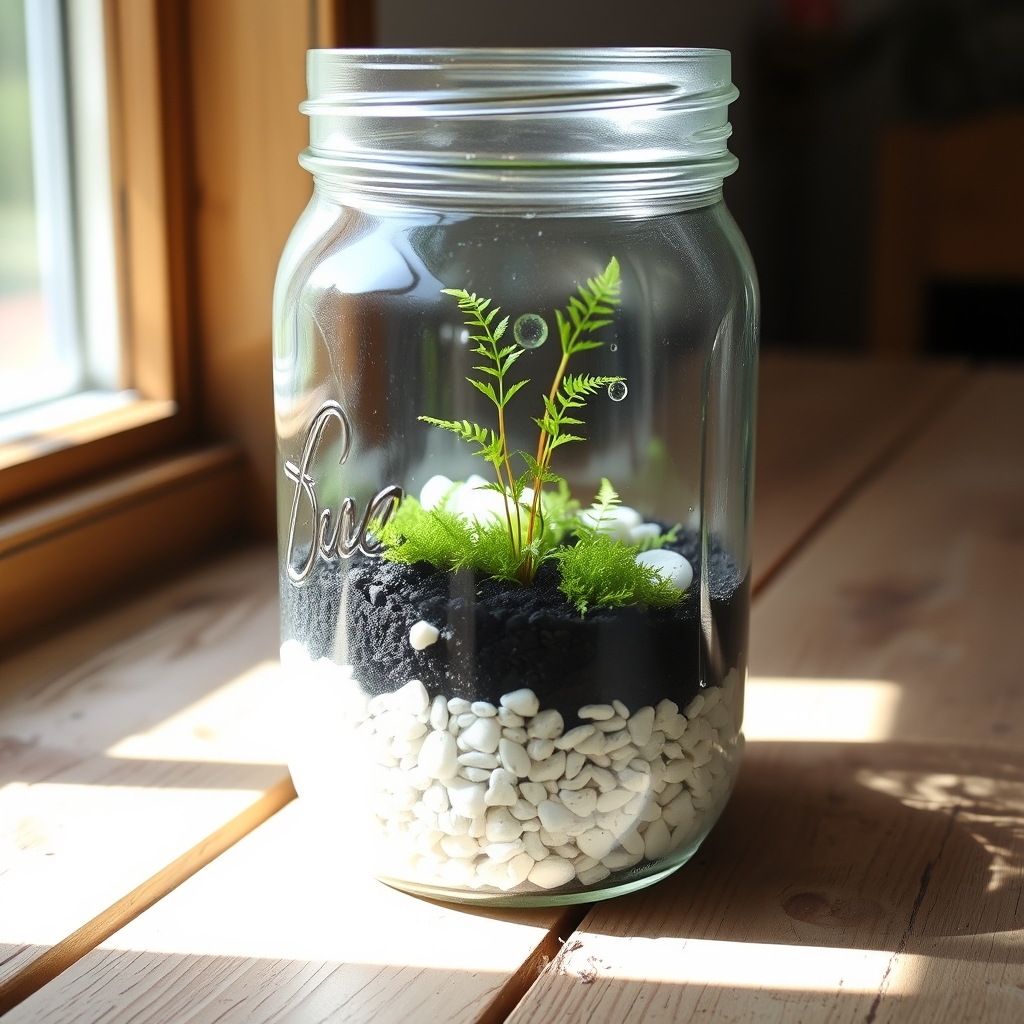
The Basic Verdant Escape is a perfect starting point for beginners looking to create a closed terrarium. This design focuses on simplicity and minimalism, using just a few key elements to craft a lush, green miniature ecosystem. It typically features a small glass container, such as a jar or a bottle, which helps maintain the humidity needed for the plants to thrive without much maintenance.
To create a Basic Verdant Escape, start with a layer of pebbles or gravel at the bottom for drainage, followed by a thin layer of activated charcoal to keep the environment fresh. Add a substrate of potting soil, then select small, humidity-loving plants like mosses, ferns, or air plants. Arrange them thoughtfully to create a natural, forest-like appearance, and seal the container to lock in moisture, creating a self-sustaining environment.
This design is ideal for those new to terrariums because it requires minimal care once established. The closed system recycles water through condensation, so watering is rarely needed. Place the terrarium in indirect sunlight, and you’ll have a tiny green escape that brings a touch of nature into any space.
